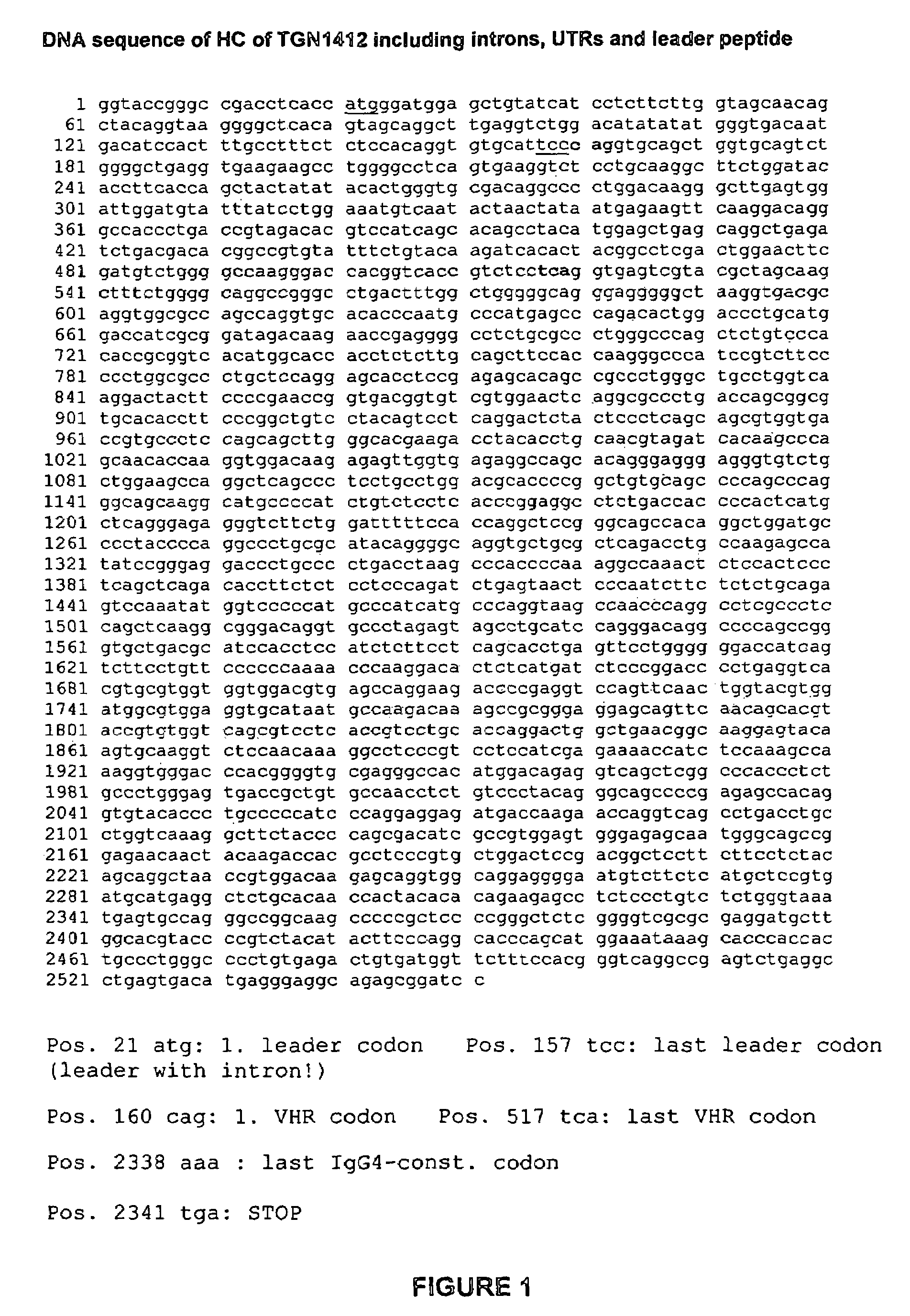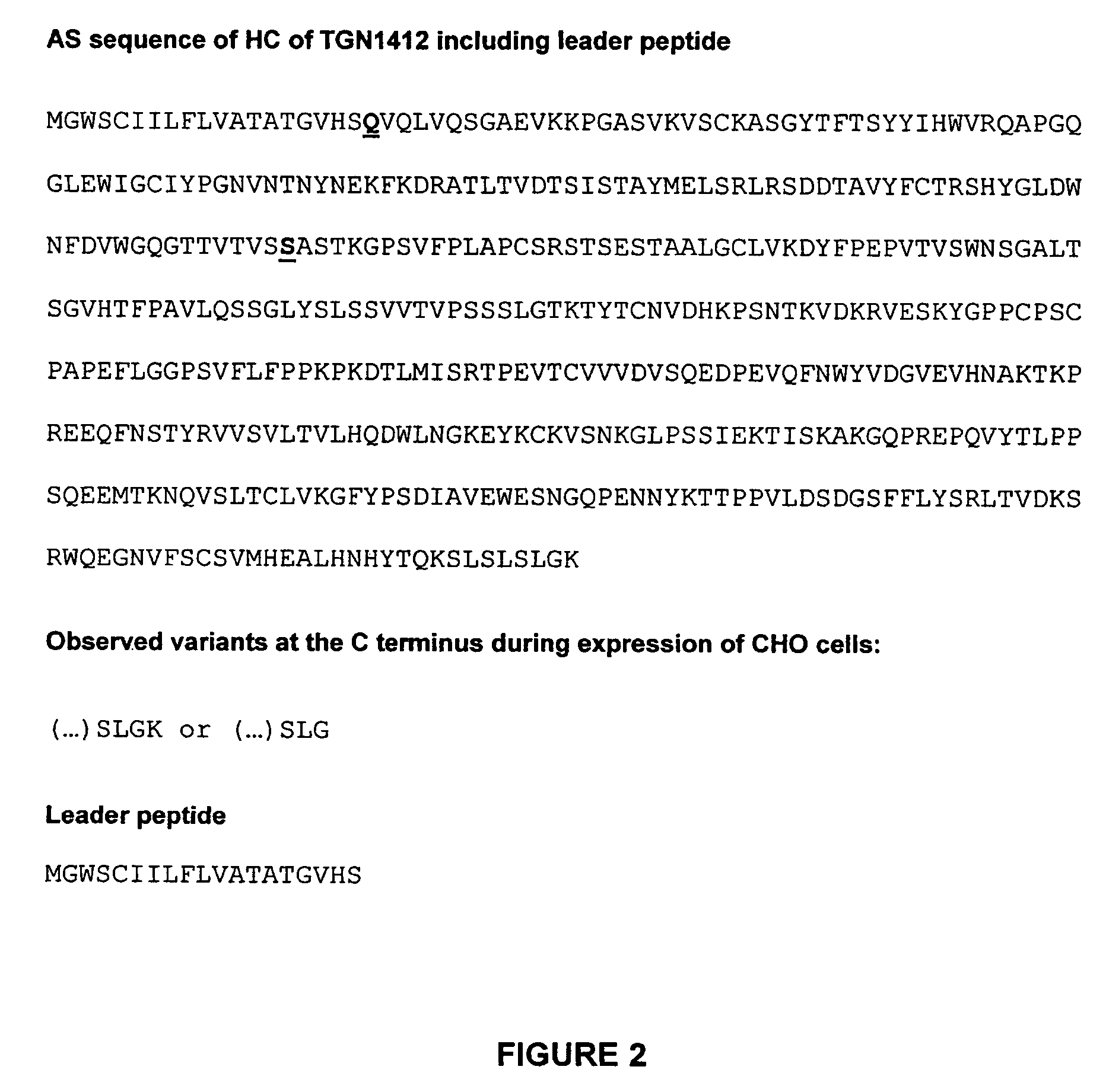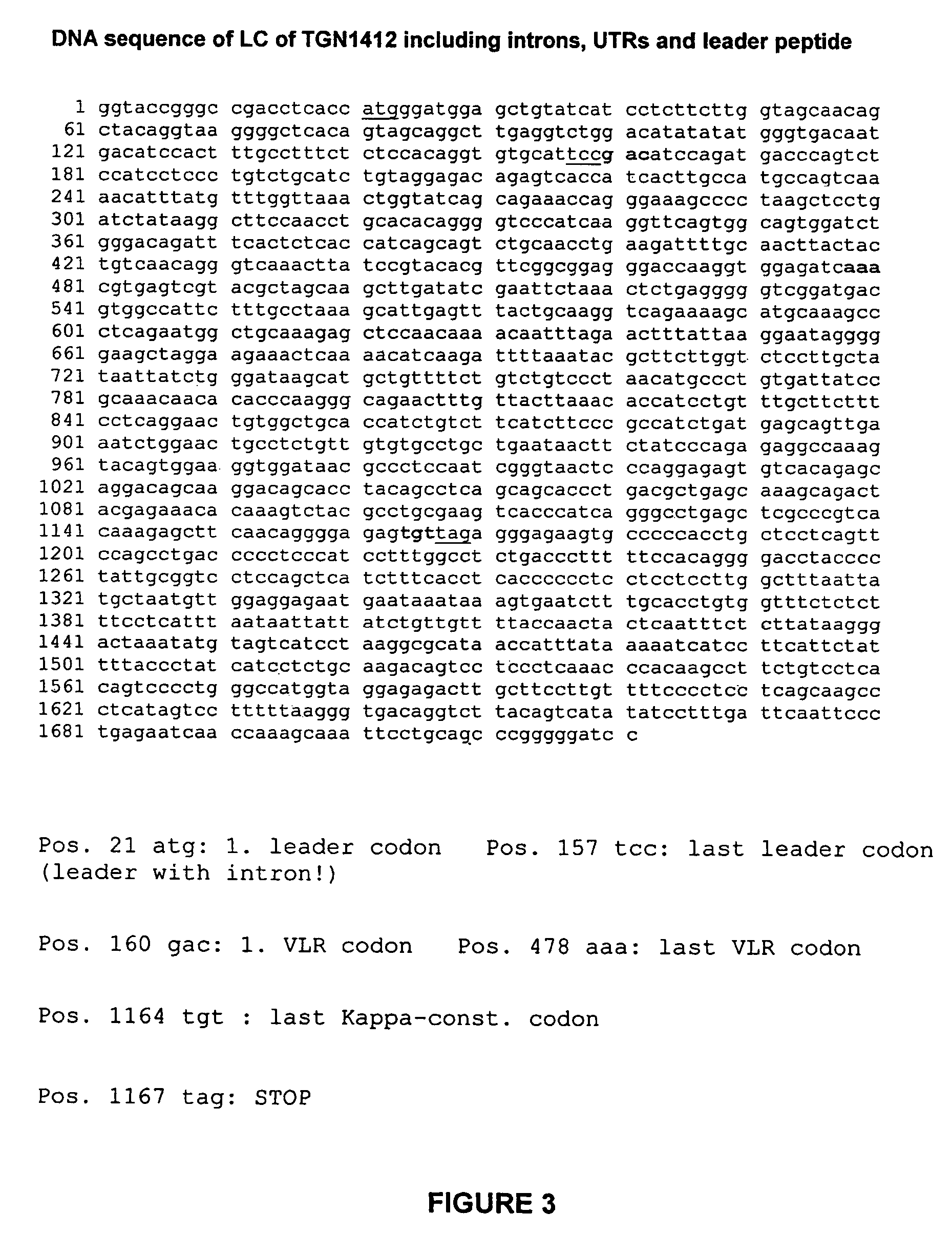Nucleic acids encoding superagonistic anti-CD28 antibodies
a technology of anti-cd28 and nucleic acids, which is applied in the field of nucleic acids encoding superagonistic anti-cd28 antibodies, can solve the problems of not being able to apply such complex dosage forms of superagonistic anti-cd28 antibodies, being unsuitable for therapeutic use, and harbouring the risk of aggravating autoimmune/inflammatory reactions, etc., to achieve efficient activation and expansion of t lymphocytes, low level, and strong proliferation
- Summary
- Abstract
- Description
- Claims
- Application Information
AI Technical Summary
Benefits of technology
Problems solved by technology
Method used
Image
Examples
example 2
T Cell Stimulation by the Antibodies According to the Present Invention
[0103]In the following, experimental findings are explained showing that surprisingly both TGN1112 and TGN1412 are able to activate ex-vivo human T lymphocytes without artificial crosslinking. In view of the fact that TGN1412 only weakly binds to the Fc receptor CD64, this could, in particular, not be expected for TGN1412.
[0104]It was first investigated whether the T-cell-activating properties of the humanized antibodies were retained vis-a-vis the basic antibody 5.11A1. The surprising result is shown in FIG. 10 by way of example. In FIG. 10A it is shown that both TGN1112 and TGN1412 in soluble form are able to efficiently stimulate peripheral blood mononuclear cells (PBMC) to proliferate in cell suspension. In FIG. 10B it is shown that the induction of the proliferation of T cells by TGN1412 was equally strong as the induction of the proliferation by the basic antibody 5.11A1, but that conventional, i.e. non-sup...
example 3
Relevance of the FC Domain for the Stimulatory Properties
[0105]It was then investigated whether the Fc domain is necessary for the stimulatory properties vis-á-vis human T cells in a culture of PBMC. For this purpose, fragments of TGN1112F(ab)2 were prepared and compared with intact antibodies in cell culture regarding the activation of PBMC. The result is shown in FIG. 11. It was found that F(ab)2 fragments of TGN1112 induced no proliferation whatsoever, whereas the intact antibodies, depending on their dosage, induced a strong proliferation of PBMC.
example 4
T Cells are the Target Cells of the Stimulatory Activity of the Antibodies According to the Present Invention
[0106]To show that the cells in the PBMC culture proliferating by TGN1412 stimulation were T cells, the analysis of the cell cycle marker Ki-67 was combined with the analysis of the surface markers CD4 and CD8. The expression of CD4 and CD8 characterizes the two main groups of T cells, T helper cells (expressing CD4) and cytotoxic T cells (expressing CD8), In FIG. 12A it is shown that soluble TGN1412 in a PBMC suspension clearly incites the proliferation of both subgroups. In FIG. 12B it is shown that also purified CD4 and CD8 T lymphocytes are clearly induced by TGN1412 stimulation to proliferate, however, in this system the presence of a crosslinking agent is required.
[0107]In FIG. 13 it is shown that by the TGN1412-mediated expansion of CD4 T cells in cell culture the repertoire of the TCRVB expression is retained. This is an important finding to the effect that in the des...
PUM
| Property | Measurement | Unit |
|---|---|---|
| concentration | aaaaa | aaaaa |
| nucleic acid | aaaaa | aaaaa |
| nucleic acid sequence | aaaaa | aaaaa |
Abstract
Description
Claims
Application Information
 Login to View More
Login to View More - R&D
- Intellectual Property
- Life Sciences
- Materials
- Tech Scout
- Unparalleled Data Quality
- Higher Quality Content
- 60% Fewer Hallucinations
Browse by: Latest US Patents, China's latest patents, Technical Efficacy Thesaurus, Application Domain, Technology Topic, Popular Technical Reports.
© 2025 PatSnap. All rights reserved.Legal|Privacy policy|Modern Slavery Act Transparency Statement|Sitemap|About US| Contact US: help@patsnap.com



